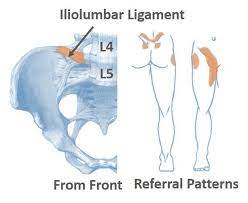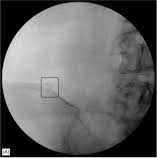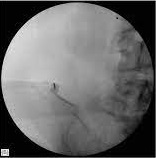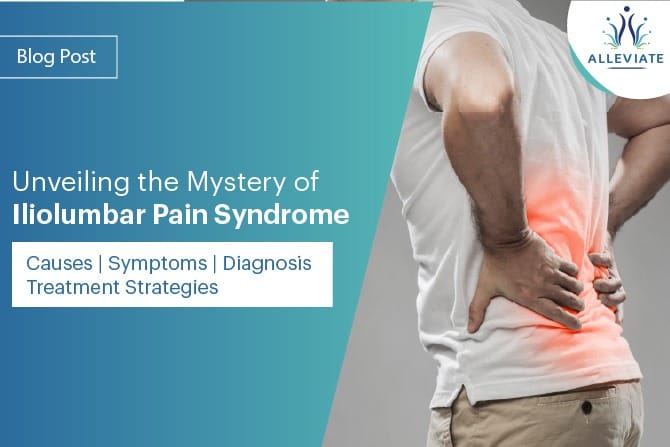Introduction
Iliolumbar Pain Syndrome (IPS) is a relatively obscure but increasingly recognized condition that can significantly impact an individual’s quality of life. This blog aims to shed light on this mysterious syndrome, providing an in-depth exploration of its causes, symptoms, diagnosis, and effective treatment strategies. Whether you’re someone experiencing iliolumbar pain or a healthcare professional seeking comprehensive insights, this article is your go-to guide for understanding and managing IPS.

What is Iliolumbar Pain Syndrome?
Iliolumbar Pain Syndrome, also known as IPS, is a musculoskeletal disorder characterized by pain and dysfunction in the region of the iliolumbar ligament. This ligament connects the fifth lumbar vertebra (L5) to the crest of the ilium in the pelvis, playing a crucial role in providing stability to the lower back. When this ligament becomes irritated or inflamed, it can lead to the development of IPS.
Causes of Iliolumbar Pain Syndrome
Several factors contribute to the development of IPS, and understanding these causes is crucial for effective management. Common causes include :
- Mechanical Strain : Repetitive stress or strain on the iliolumbar ligament, often due to poor posture, improper lifting techniques, or prolonged sitting, can lead to IPS.
- Trauma : Injuries such as falls, direct blows to the lower back, or accidents that cause sudden and forceful movements can result in damage to the iliolumbar ligament.
- Muscular Imbalances : Weakness or imbalance in the surrounding muscles, including the core and hip muscles, can contribute to increased stress on the iliolumbar ligament.
- Degenerative Changes : Aging and wear-and-tear can lead to degenerative changes in the spine, affecting the integrity of the ligaments and contributing to IPS.
Common Symptoms of Iliolumbar Pain Syndrome
Recognizing the symptoms of IPS is crucial for early diagnosis and intervention. Common symptoms include:
- Lower Back Pain : Persistent, localized pain in the lower back, often on one side, is a hallmark symptom of IPS.
- Radiating Pain : The pain may radiate into the buttocks, hip, or groin, mimicking other conditions like sciatica.
- Stiffness : Individuals with IPS may experience stiffness in the lower back, particularly after periods of inactivity.
- Limited Range of Motion : IPS can restrict the normal range of motion in the lower back, making certain movements uncomfortable or painful.
- Tenderness : Palpation of the iliolumbar ligament area may reveal tenderness, helping clinicians in the diagnostic process.

Diagnosing Iliolumbar Pain Syndrome
Clinical Evaluation
Diagnosing IPS often involves a comprehensive clinical evaluation, where healthcare professionals assess the patient’s medical history, conduct a physical examination, and discuss the onset and characteristics of the pain. Palpation of the iliolumbar ligament and range of motion testing are essential components of the clinical assessment.
Imaging Studies
While clinical evaluation provides valuable insights, imaging studies such as X-rays, magnetic resonance imaging (MRI), and computed tomography (CT) scans may be employed to rule out other potential causes of lower back pain and confirm the diagnosis of IPS.
Treatment Approaches
Conservative Management
The majority of IPS cases can be effectively managed through conservative approaches. These may include :
- Rest and Activity Modification : Temporary rest and avoiding activities that exacerbate symptoms can help alleviate pain and promote healing.
- Physical Therapy : Targeted exercises to strengthen the core and hip muscles, improve flexibility, and correct posture can be integral to the rehabilitation process.
- Pain Management : Nonsteroidal anti-inflammatory drugs (NSAIDs) or other pain medications may be prescribed to manage pain and inflammation.
- Heat and Ice Therapy : Application of heat or ice to the affected area can provide symptomatic relief and reduce inflammation.
Interventional Procedures


Fluoroscopy guided corticosteroid injection for iliolumbar pain syndromeIn cases where conservative measures are insufficient, interventional procedures may be considered. These may include :
- Corticosteroid Injections : Injections of corticosteroids into the iliolumbar ligament can provide targeted relief from pain and inflammation.
- Prolotherapy : This regenerative medicine technique involves injecting a solution to stimulate the body’s natural healing processes and strengthen ligaments.
- Platelet-Rich Plasma (PRP) Therapy : PRP injections, which contain concentrated platelets from the patient’s own blood, can promote tissue repair and reduce inflammation.
AT ALLEVIATE PAIN CLINIC, we usually use a combined approach involving image guided Prp with Prolotherapy followed by a structured physical therapy regimen to address iliolumar pain syndrome.
Surgical Options
While surgery is rarely necessary for IPS, it may be considered in cases of severe ligamentous damage or if conservative measures and interventional procedures fail to provide relief. Surgical options may include ligamentous reconstruction or stabilization procedures to address the underlying structural issues.
Preventing Iliolumbar Pain Syndrome
Ergonomics and Posture
Maintaining good ergonomics and proper posture is crucial for preventing IPS. This includes using ergonomic chairs, lifting objects correctly, and avoiding prolonged periods of sitting or standing without breaks.
Exercise and Strength Training
Regular exercise, with a focus on strengthening the core and hip muscles, can help prevent muscular imbalances and reduce the risk of IPS. Incorporating activities such as swimming, walking, and yoga can contribute to overall spinal health.
Lifestyle Modifications
Making lifestyle changes, such as maintaining a healthy weight, staying hydrated, and avoiding activities that strain the lower back, can play a significant role in preventing the onset of IPS.
Conclusion
Iliolumbar Pain Syndrome may be a relatively lesser-known condition, but its impact on individuals’ daily lives can be significant. By understanding its causes, recognizing the symptoms, and exploring effective treatment options, both patients and healthcare professionals can work together to manage and alleviate the challenges posed by IPS. With a comprehensive approach that includes conservative measures, interventional procedures, and, in rare cases, surgery, individuals can regain control over their lives and achieve a better quality of life.





